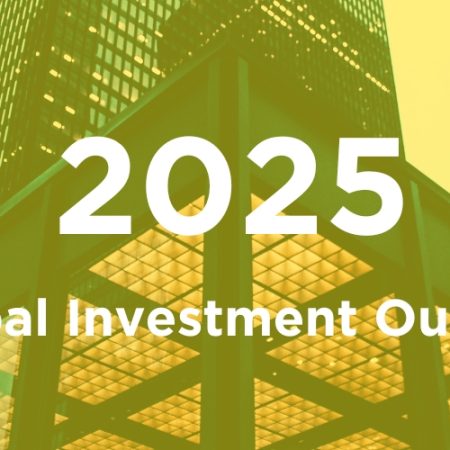Geopolitical risk has leapt up real estate investors’ agendas. Its impact on financial markets creates challenges for pricing and forecasting, leaving investors with the dilemma of how to respond.
Real estate: mentions of geopolitics in public reporting
Source: Savills Research. Based on a review of the annual reports of a selection of major global real estate investors
In 2016, Mark Carney, then governor of the Bank of England, identified what he called an ‘uncertainty trinity’ affecting economic performance: economic uncertainty, policy uncertainty and geopolitical uncertainty. While the first two are relatively familiar and often quantifiable, geopolitical uncertainty represents a more complex challenge – essentially the cross-border spillover of economic and policy volatility that can disrupt financial markets and international relations at both regional and global levels.
This category of risk is particularly challenging to measure because it encompasses such a broad range of outcomes: military conflict, regulatory changes, terrorism, cyber threats, energy security, climate policy and, of course, trade wars. And it involves diverse actors from governments and corporations to households and activists, each with their own motives and decision-making processes.
An ‘omnipresent’ risk landscape
Geopolitical risk is increasingly omnipresent in global markets. As a result, it’s firmly on the radar of real estate investors, as the Investment Intentions Survey of real estate investors conducted by INREV, ANREV and PREA in late 2024 underlined. Across Asia Pacific, Europe and North America, respondents put geopolitics in the top three issues affecting global real estate investment.
Emma Steele, Director, Global Cross Border Investment, Savills says that geopolitical risk can cause investors to pause investment activities and adopt a ‘wait and see’ approach. “But that said, we continue to see good demand in the real estate market and have seen a series of investors actually taking an even more positive stance on the prospects for real estate,” she says. “They predominantly cite its tangibility, but also its growth prospects and potential for attractive returns.”
World Geopolitics Risk Index
Source: Savills Research using Macrobond. Geopolitical risk index based on text-based analysis to identify frequency of related language
The interconnected nature of trade and capital flows means events can have a far-reaching impact. Russia’s invasion of Ukraine in 2022, for example, led to a spike in food and energy prices and a global surge in inflation, even in economies with little or no direct exposure to the conflict. It’s indicative of how geopolitics often involves events that were previously viewed as low-probability ‘what if’ tail-risks, but which transpired with potentially large and lasting implications.
How does geopolitical risk impact the global economy?
While geopolitical risks are challenging to forecast, their economic impact is clearer. It can be direct, in terms of sanctions; restrictions on the flow of trade, capital and people; or wars or cyber and terrorist attacks. But it can also be indirect, through more volatile asset prices, higher risk premiums and increased caution among investors, households and businesses.
There is a clear correlation between spikes in geopolitical risk and the underperformance of listed equities, bonds, currencies and commodities in the short term, but these impacts tend to fade over time.
Impact of geopolitical risk on public equity markets
Source: Savills Research using Macrobond. Geopolitical risk quantified by the geopolitical risk index. Based on equity price returns in Japan, US, UK, France, and Germany since 1985. High risk scenario defined as any month where the geopolitical risk index was a standard deviation above the average level
Public markets have the benefit of being highly liquid, which private markets, such as real estate, do not. This raises risk for the latter. For example, after the invasion of Ukraine, public equity investors in Russia could quickly sell some of their positions. Businesses and investors with private, off-market holdings, on the other hand, faced a much longer exit route and often had to accept significant losses to extricate themselves from the country.
Although the impact of geopolitical risk on financial markets is largely short-lived, it has a more lasting effect on business investment. Firms generally adopt a ‘wait-and-see’ approach before making irreversible fixed capital commitments to expensive new buildings or heavy machinery.
Essentially, geopolitical risk introduces friction into decision-making. This can lead to under-investment or inefficient investment. For example, when companies bring manufacturing closer to home markets to reduce supply chain disruptions, this usually comes at a cost.
Reshaping real estate capital flows and strategies
Some real estate investors are much more focused on buying and selling properties for financial gain, as opposed to just for the benefit of the incomes they can generate. But these assets are large, illiquid and expensive to transact. As a result, geopolitical uncertainty can significantly influence activity.
We are already seeing tangible shifts, as businesses actively re-evaluate supply chains. The 2024 UNCTAD World Investment Report identified a pronounced five-year trend of the largest multinationals increasingly favouring manufacturing locations closer to home markets (‘nearshoring’ or ‘reshoring’), particularly for strategic sectors. Driven by a desire for resilience against geopolitical disruptions, this shift has benefited the companies’ domestic bases, largely in Europe and North America.
Simultaneously, global Foreign Direct Investment (FDI) has declined. In 2023-2024, FDI to the 20 largest recipient countries averaged around 1.3% of GDP – the lowest proportion since 1996 and well below the long-term average of more than 2%. National governments are also tightening restrictions on inward investment by implementing FDI screening measures, particularly for sectors deemed critical to national security (such as semiconductors, aerospace and defence).
China provides an example. Escalating tensions with the US, coupled with a difficult recovery after the pandemic and rising regulatory risks, has led some institutions to rethink the country’s potential. This is reflected in a sharp decline in FDI inflows, mirrored by a decline in cross-border real estate investment.
China FDI and cross-border investment
Source: Source: Savills Research using Macrobond and MSCI Real Capital Analytics
Proximity to conflict zones also has a clear impact. Poland, historically the largest and most liquid real estate market in central and eastern Europe, saw investment plummet after Russia’s 2022 invasion of Ukraine. Before the war, Poland accounted for between 50 and 60% of foreign capital inflows to the region. Cross-border investment in 2023 totalled $1.5bn – roughly equivalent to a single quarter’s average before the pandemic – with long-haul investors from the Americas and Asia Pacific withdrawing almost entirely. However, this has since stabilised.
“Now we are starting to see a recovery in activity as a status quo has been established in the region, giving investors more certainty over the outlook,” says Stuart Jordan, CEO of Savills Central and Eastern Europe. “Poland has led European growth in recent years and is expected to do so again going forward.”
Commercial real estate investment in Poland
Source: Savills Research using MSCI RCA. Excludes development sites
A more volatile, fragmented world?
Risk and opportunity are, of course, two sides of the same coin. The great fear, however, is that investor confidence and appetite for risk could be casualties of the current fragmentation in our world order. Looking ahead, a sustained period of heightened geopolitical risk points toward several broad macroeconomic implications.
Reduced free movement of goods, capital and people is undermining the efficiency gains from specialisation and competition. It also weakens the shock-absorbing capacity of global supply chains and distorts capital flows away from their most productive uses.
Waning support for multilateralism in the face of nationalist politics could combine with fading globalisation to sap economic growth and weaken the world’s ability to meet challenges such as climate change, pandemics and sovereign debt crises. At the same time, the erosion of global cooperation limits positive spillovers like technology diffusion and talent migration. All this, as higher defence spending crowds out more productive use of public funds, further strains already stretched government finances.
Will a new generation of risk-averse ‘depression babies’, shaped by persistent uncertainty, hinder the entrepreneurialism needed to drive recovery?
Let’s hope not. Certainly, it need not be that way. Overall cross-border real estate investment since the pandemic has stabilised at around 21-22% of total investment globally, albeit down from an average of nearly 30% in the five years to 2020.
And there are other encouraging trends. Global capital flows, though weaker than before, are now a bit more widely spread, benefiting lesser-served markets. That said, diversification remains a relatively narrow concept in real estate, with the 10 major markets in North America, Europe and Asia Pacific accounting for more than three-quarters of investment.
Slower economic growth will clearly affect all real estate sectors, due to reduced tenant demand. Unwinding our highly integrated economies could stall growth in logistics centres and warehouses, while supply chain issues and inflation push up labour and construction costs across the board.
Implications for real estate investment
As Mark Carney noted regarding uncertainty: “Any economic decision that requires finance, has a sunk cost, or an uncertain payoff, is affected.” Real estate typically involves all three. So what does today’s complex and uncertain geopolitical environment mean for the sector?
Despite headwinds, the new world order presents some specific sector opportunities. Data centres, for example, are experiencing soaring demand, driven by the growing popularity of artificial intelligence and cloud computing. Concerns over energy and security, meanwhile, are prompting hyperscalers – the major providers of cloud computing and data management services – to build in more locations and increasingly favour national data sovereignty, reshoring infrastructure to reduce exposure to geopolitical risk.
Less understood, perhaps, is the potential impact increased defence spending is having on real estate, particularly in the industrial and logistics and offices sectors. ESG concerns and reputational sensitivities, however, may limit some investors’ willingness to engage with defence-adjacent tenants, despite their typically long leases and solid covenants.
Opportunities always arise during periods of flux and disruption – precisely the kind of environment the world now faces. Geopolitical risk has, unfortunately, become a permanent feature affecting global and local economies alike. While it’s important to manage this risk, the lesson from history is to resist becoming over-cautious as a result. The most successful investors will be those who can both manage risk effectively and adapt quickly to the changing landscape, finding opportunity where others see only uncertainty.



